Hidden Gems of Game Design Volume 19
Unearthing gems with Vomitoreum, Blacklight Retribution, Ribbym, and NeverAwake
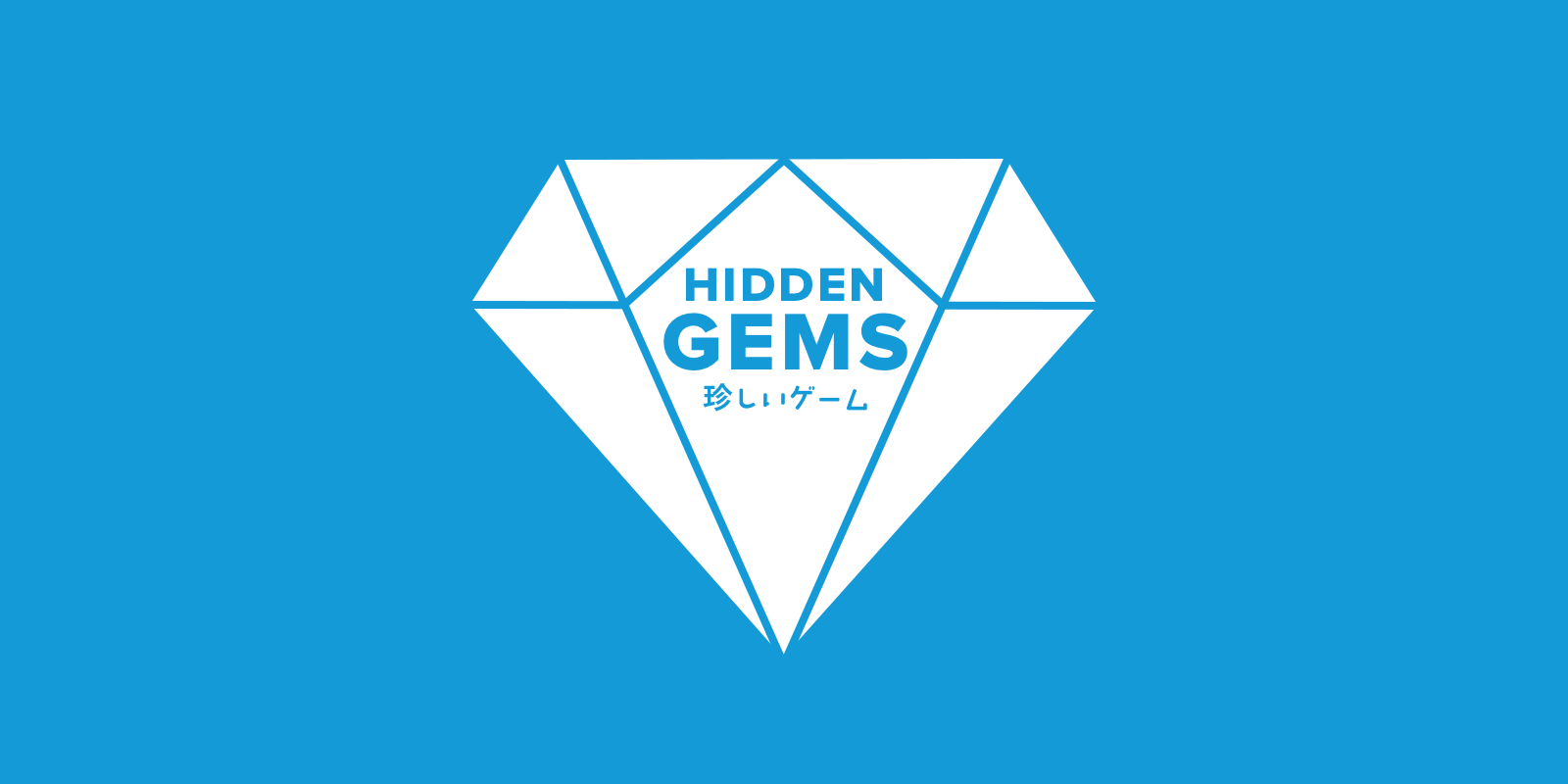
There are plenty of amazing games that go unnoticed and are not played widely, for one reason or another. Maybe it's a diamond in the rough, or the marketing wasn't there, or it could be a game ahead of its time. For this monthly series, I've asked my fellow writers on SUPERJUMP to pick a game they think is deserving of a chance in the spotlight. Let us know your favorite hidden gems in the comments.
Josh Bycer
Vomitoreum (2021)
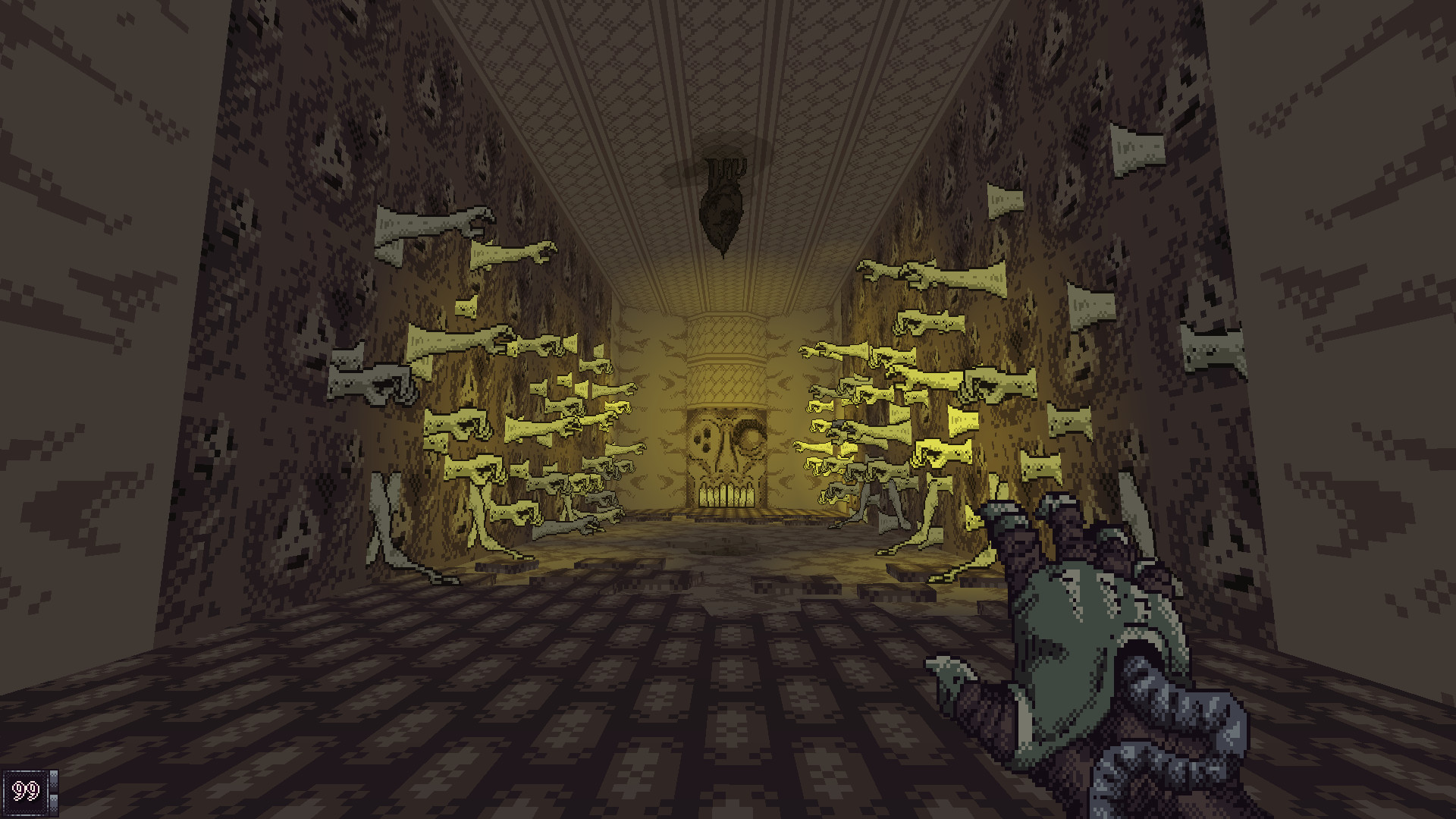
In honor of this month marking the 30th anniversary of Doom, I’m going to talk about one of the many Doom-inspired, GZDoom-based, full conversion mods that turned into a full game - Vomitoreum. Taking place in a world corrupted by a mysterious fog that has plagued the planet, you control a Nephilim, the only being who can brave the world, and must seek the cause of the fog and stop it. The game’s aesthetics are inspired by Polish dystopian surrealist painter Zdzislaw Beksinski and present a bleak, yet varied, landscape.
If you’re not familiar with GZDoom and full conversion mods, this is a completely original game built off of Doom’s engine. While you will be playing in first person, this is nothing like a boomer shooter. Taking elements of Metroidvania design, you’ll explore the open world looking for clues, upgrades, and weapons that you’ll need to fight back against hordes of monsters. You’ll eventually unlock movement tech such as double jumping and air dashing that will be used to explore further.
As far as shooters or Metroidvanias go, this is by no means the hardest example of either. There are a few boss fights and tricky sections, but as long as you keep moving you should be fine. There are some very brutal imagery and content warnings for how the story goes; this is definitely for mature audiences. The unique landscapes and environmental storytelling paint a very unique picture of the state of the world. While the game still has the kind of “ice skates” physics of Doom, the platforming feels good thanks to some very generous jumping and additional abilities you pick up.
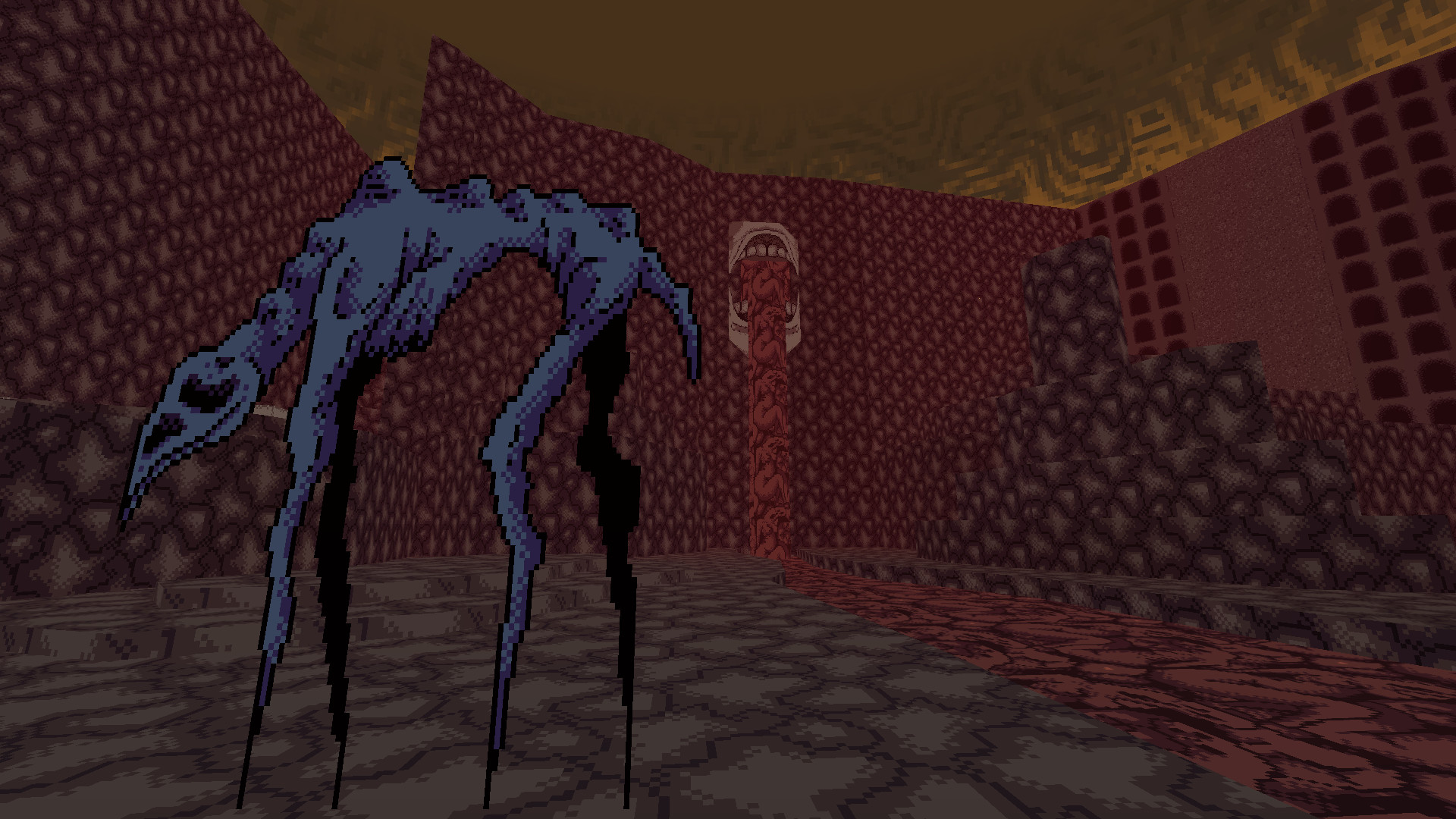
Taking elements of Metroidvania design, you’ll explore the open world looking for clues, upgrades, and weapons that you’ll need to fight back against hordes of monsters.
All in all, the game is only a few hours long, longer if you go for all the hidden collectibles. While it is certainly not the most robust example of changing what we know about Doom with GZDoom mods, it’s a great entry point for fans of the Metroidvania genre and can start you down the rabbit hole of the Doom-modding scene.
Antony Terence
Blacklight Retribution (2012)

As a kid, free-to-play titles were a lifesaver. $60 was a tough asking price and Steam’s regional pricing wasn’t great a decade ago so a free lunch felt great regardless of what was in it. While many free games had predatory monetization schemes, my naive suspicion of the internet kept my dad’s credit card information away from them. That’s when a senior at my school introduced me to Blacklight Retribution. Billed as a sci-fi Call of Duty with unique X-ray vision and mechs akin to Titanfall’s, this PC and PS4 title from Hardsuit Labs sounded impressive on paper. On further inspection, I discovered that all those ideas came together remarkably well.
With tight shooting and solid visuals for the time, the game’s complex customization quickly won me over. Your character could move faster or take more damage based on what equipment you picked. But the weapons were the real draw: finetuning every single aspect of them, from clip to barrel, stock, and sights had me engrossed between matches.
Back then, time wasn’t a tall price to pay. While the grind for slightly better gear would eventually grow tiresome, every match gave you credits toward your dream gear. Items could be unlocked faster with real-world currency, which felt unfair at times. Despite being able to rent items for a day or a week, I only tested weapons this way before working towards a permanent purchase. But that didn’t stop me from knocking neon-clad combatants down with my free-tier weapons. The game’s HRV and Hard Suit mechanics helped even the odds.
Think of Blacklight Retribution’s HRV (Hyper Reality Visor) like a wall hack but every player got it on a cooldown. This mechanic felt great as someone who was warming up to online multiplayer shooters like Team Fortress 2. Since everyone was using HRV, players were more careful about sprinting headfirst into the business end of a shotgun.
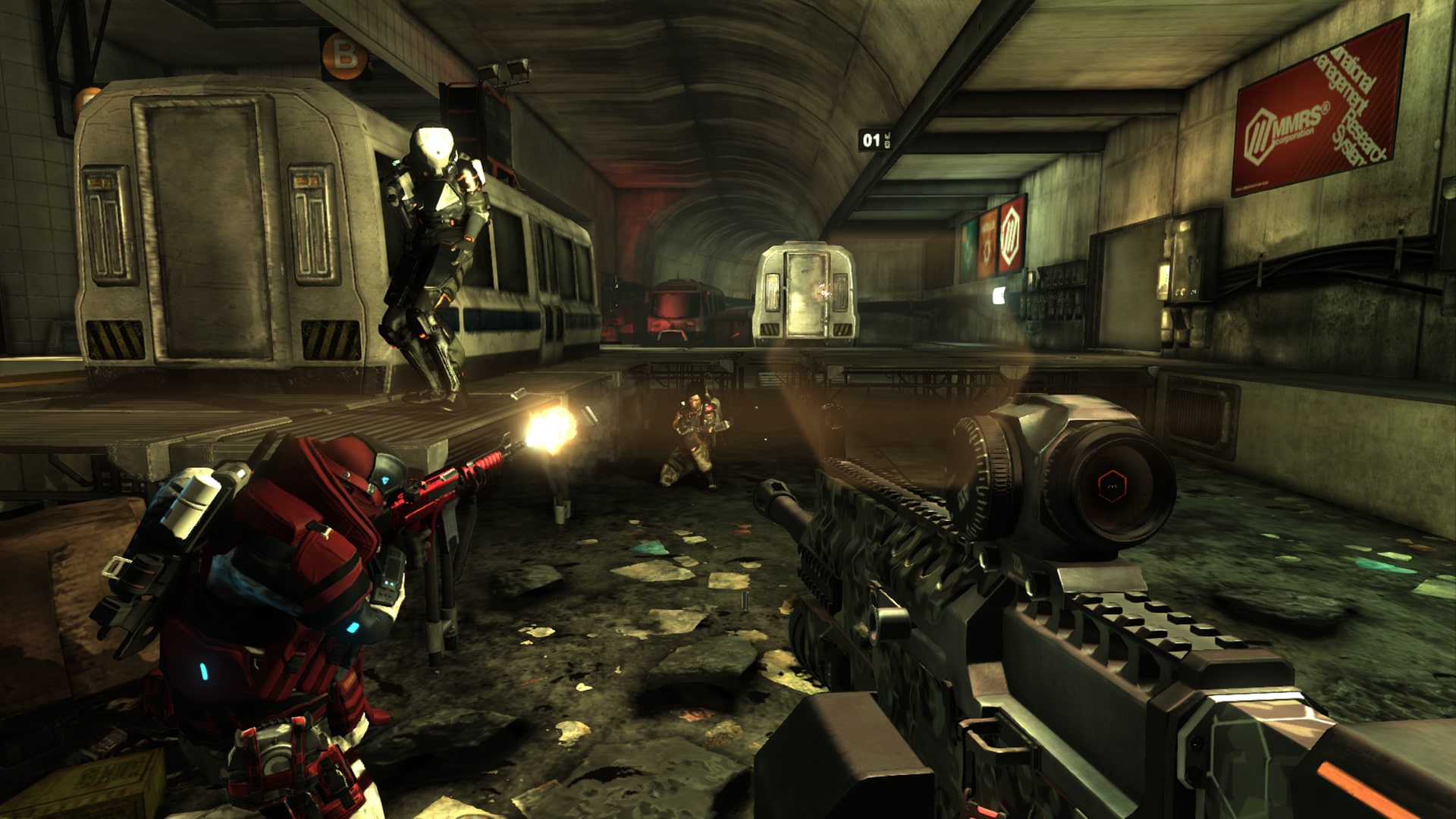
The weapons were the real draw: finetuning every single aspect of them, from the clip to barrel, stock, and sights.
Instead of Call of Duty’s killstreaks, this game lets you use depots with points earned throughout a match that didn’t reset with death. While health and ammo refills were nice, depots could cough up a rocket launcher or minigun too. This, too, could be customized beforehand. Rack up enough points and you’d get a Hard Suit, a massive heavy weapons unit with a minigun and a railgun that knocked enemies out in one shot. While it was essentially a walking tank, the drop in mobility and the chance of getting stuck in a small space meant that players didn’t always save up their points for it. The Hard Suit was costly enough that not every player had them but fighting them alongside friends always felt like we were facing a dire threat. Finding a weak spot or somehow killing the Hard Suit user to take over the mech is an experience I remember to this day.
Matchmaking was incredibly smooth and matches seldom felt glitchy, a feat I would grow to appreciate as I played more multiplayer titles. Becoming the team’s “warlord” by scoring the most points was another nice touch. Watching the camera freeze the world and zoom into an opponent after you were killed dulled the pain between respawns.
With an identity forged by blue and orange color schemes, Blacklight Retribution’s fast-paced sci-fi shootouts and deep customization options tower over its iffy monetization. While the game’s popularity waned before it shut down in 2019, it’s one of the best freemium experiences I’ve had. Heck, I’d take it over today’s battle passes and weapon skins in a heartbeat.
Priya Sridhar
Ribby

While I’ve only played the Ribby demo, I have enjoyed it a lot. It’s a standard RPG where the title character is trying to find her way home, yet it is very whimsical, with cute designs and feel-good music. I haven’t fought a boss battle yet because the demo ends before you can start one, but I can tell they are going to be exciting.
Ribby doesn’t know how she ended up in the mountains. Heck, she doesn’t even know where she is. Getting home is her priority, though finding shelter before dark would also help. She gets lucky when she encounters a town mayor who offers to house her for the time being. Once they get to the town, Ribby can figure out how to get home, and what led her to the mountains in the first place.
The demo allows one to collect photos, solve puzzles, and explore the trees. With a planned release date in 2024, I can’t wait to see what else we can do, and explore in this beautiful world.
NeverAwake

I was privileged to receive a code for NeverAwake, a twin-stick shooter where you help a girl named Rem escape her nightmares. The levels are based on Rem's primal fears, which include hospitals, schools, and dog parks. Alas, one does have to shoot them all and avoid getting hit in turn while navigating obstacles, including dogs that have seen better days. In some cases, you even have to deal with portals or activate certain monsters to pave the way for you to move forward, or else you'll run head-first into obstacles and lose valuable health. Rem’s dreams are very creative and quite effective in engaging the player with Rem's fears.
Each challenge felt fair, with minor exceptions, and the bosses were either fun or terrifying. The more that you play, the more power-ups you can receive, which will help you navigate the levels with ease. I haven’t replayed the game to get all the scrapbook journal entries, but I know they are there.
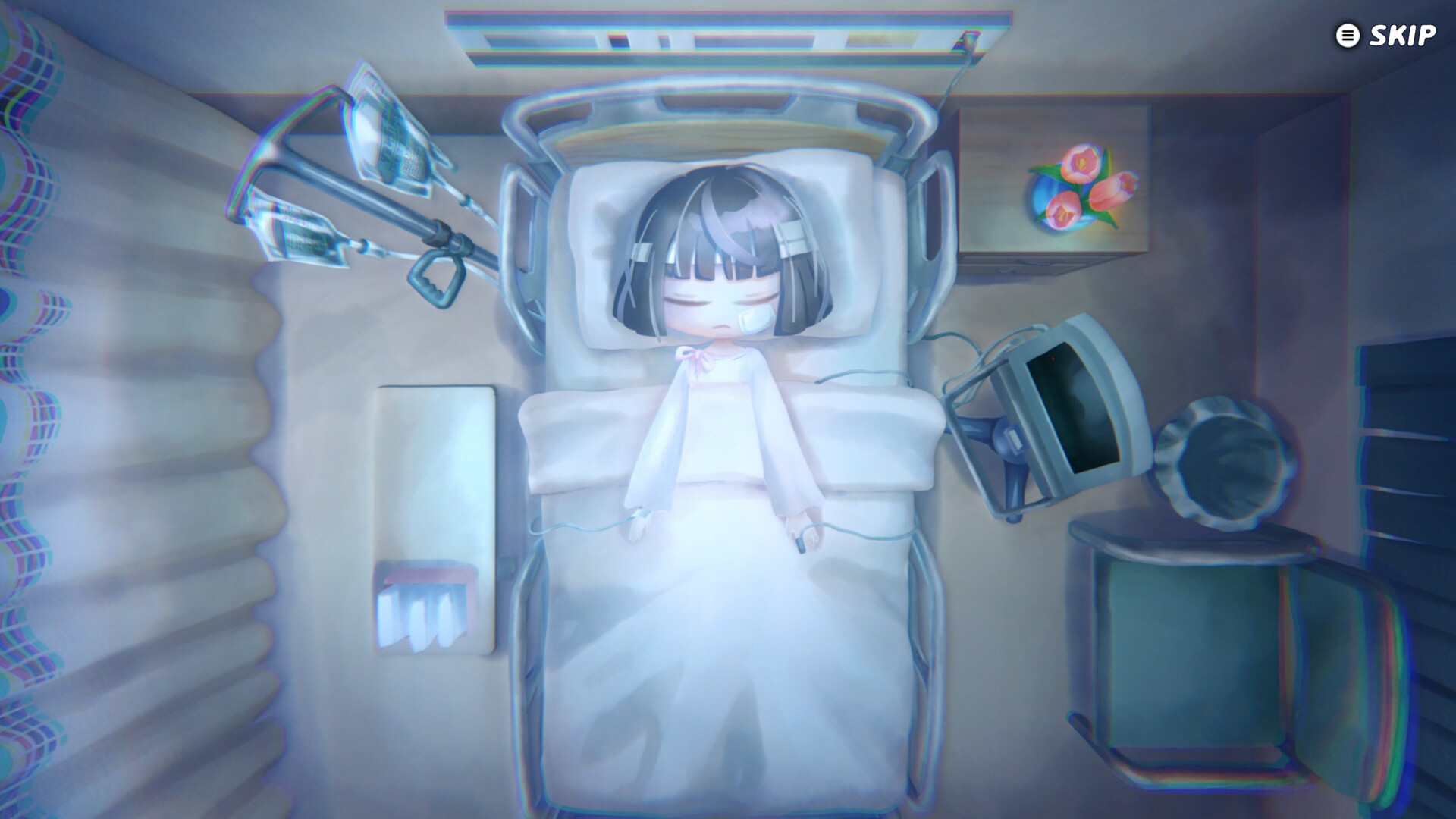
The game’s art style is simply breathtaking. The imagery reminds one how real dreams are strange and absurd, while based on our subconscious. We have to wake up eventually, but our dreams may still haunt us after we open our eyes.
